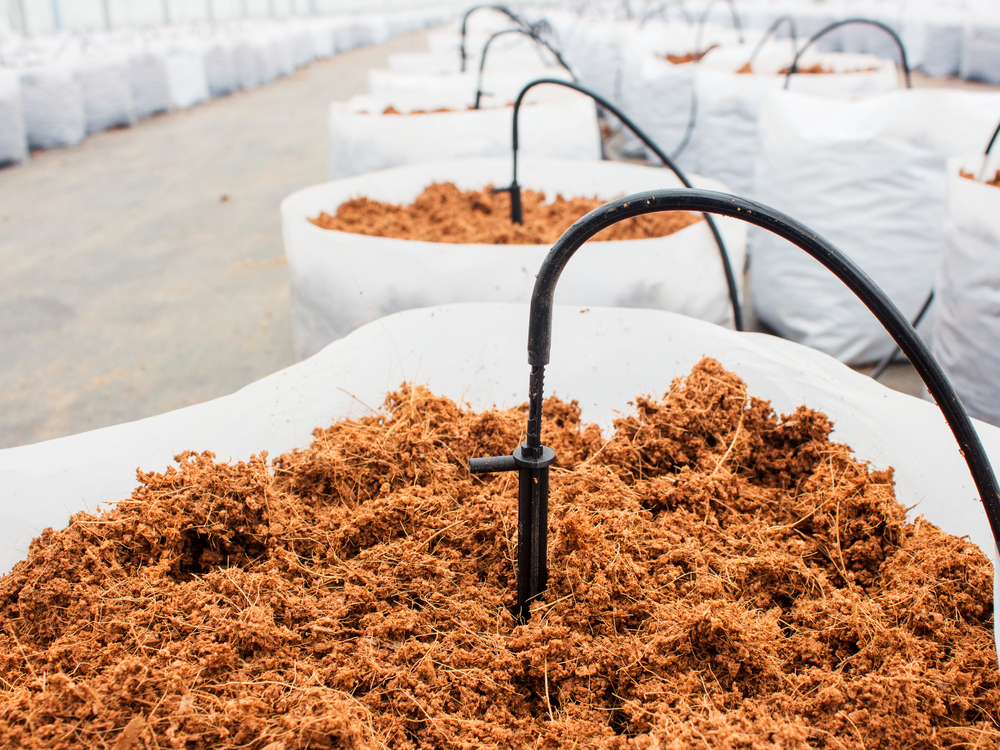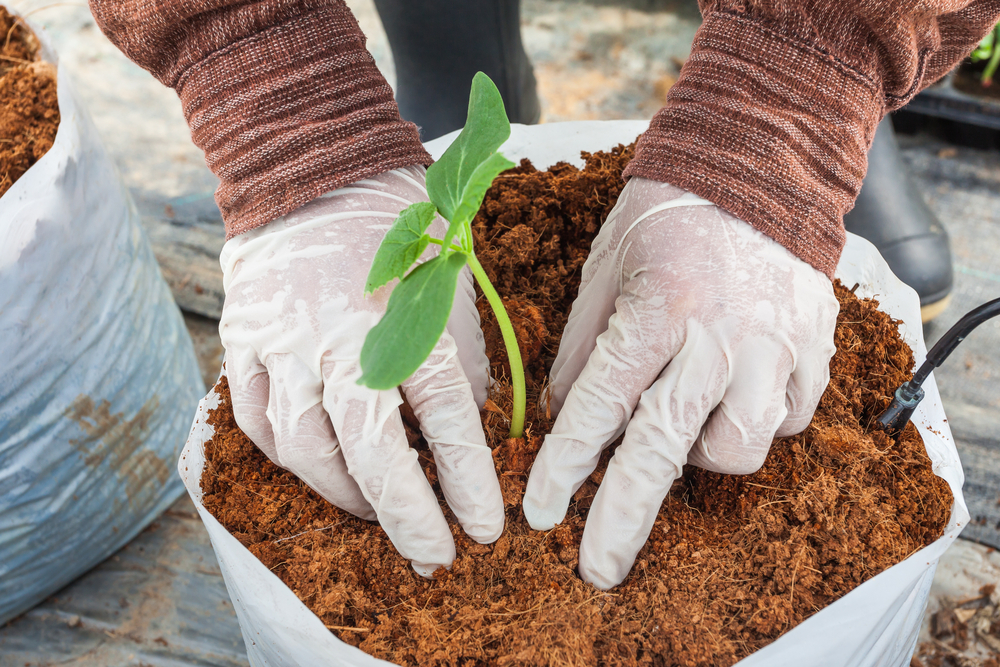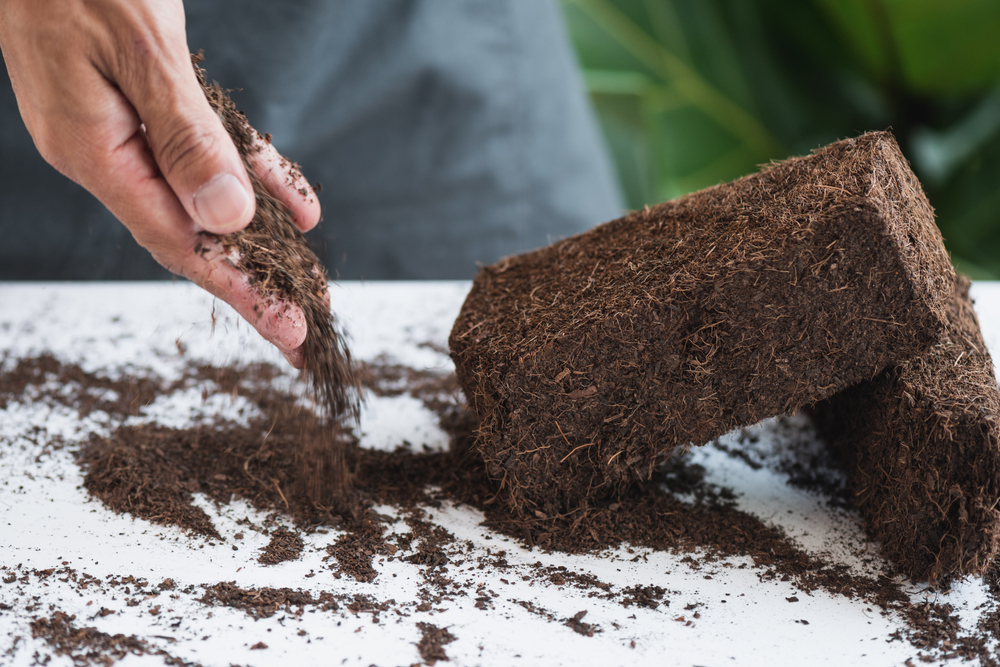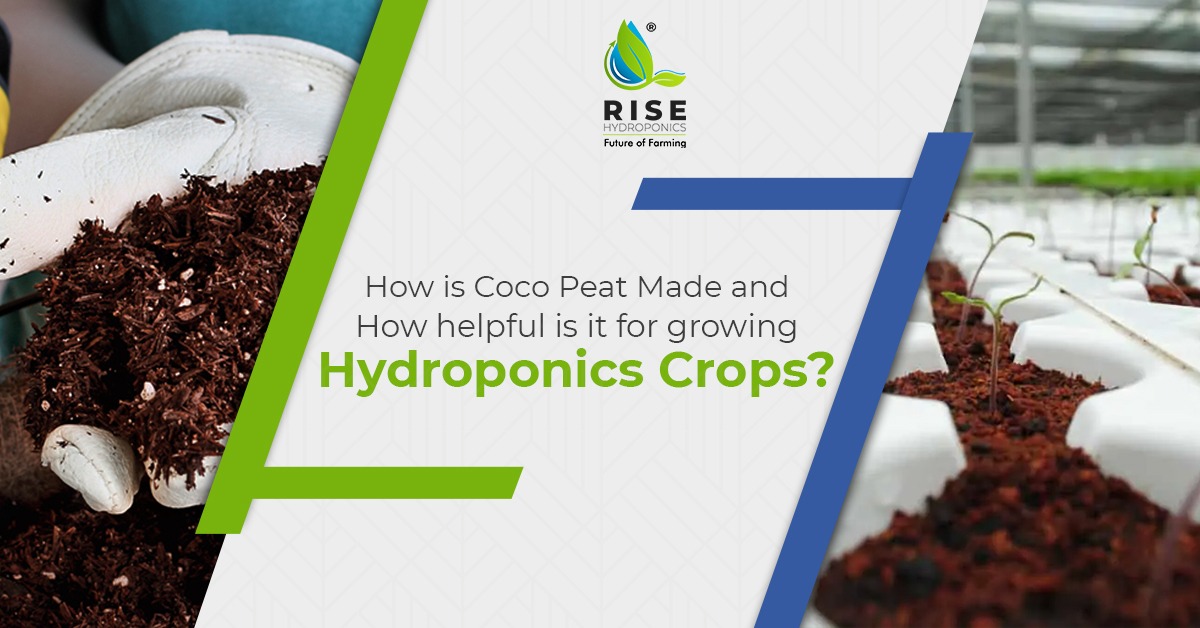Dear reader, we assume that you are familiar with words like substrate-based gardening, aquaponics, and hydroponics by this time. In essence, cocopeat is a medium that is not soil and helps to grow plants. Among other factors that regulate the success of hydroponics farming, the selection of media plays the most crucial role.
For any growing medium to be ideal, it must be inert. It must be able to retain water and must permit the circulation of air in the root zone. Also, it must support the roots, give the plants steadiness, and not allow sunlight to permeate.
There are a myriad of such media sold in the market. Go to a store, and you can place your hands on stone pebbles, vermiculite, Sphagnum Moss, perlite, Clay Pebbles/ hydroton/ LECA, pith, or coir/coco peat. Each medium has its own advantages and disadvantages.
Always start out with the one that has fewer cons. According to us, we feel coco peat stands out from any other media. It helps with successful germination, and the best part is that you can get it from a coconut tree in your backyard.
This growing medium is multi-purpose and made from coconut husk. The fibrous husk of the coconut is sieved, machine dried, pre-washed, and is made sand-free. You will also not find any plant or animal residue in a cocopeat. The cocopeat is an excellent alternative to traditional rock wool and peat moss. In this article, we will discuss how coco peat is made and how it helps grow plants.
Why is coco peat the versatile growing media?

Between traditional Rockwool and peat moss, no other alternative comes close to coco peat. It has a high capacity to hold water and has air-filled porosity. These characteristics make it one of the best growing mediums for plant crops.
Coco Peat is 100 percent organic, eco-friendly, and free from soil-borne weeds and pathogens. It has a pH of 5.7-6.5 and is perfect for plant growth. The coco coir material is made from a coconut shell’s woven, fibrous material.
Most home gardeners prefer this organic soil replacement because of its aeration and moisture retention traits. Moisture retention is crucial as consistently wet conditions are required for plant growth. Thus, you do not end up over-watering or under-watering your garden. The aeration feature in the coco peat allows the development of roots and helps them respire better. Plants expel carbon dioxide and take up oxygen. Both the factors we mentioned contribute to unbelievable yields and enhance plant growth.
For us Indians, the coconut tree is the “kalpavriksha” because each and every part of the tree is of great use to us, in some way or the other. Here are some coconut products that farmers use in agricultural fields.
- Coir pith/coco peat derived from coconut husk
- Coco chips are made from the coconut’s outer shell. It is then used as a medium of growth.
- The coco fiber is used as mulch.
- The coco fiber planter is the compressed fiber of coconut squashed into multiple containers like pots and hanging baskets.
Why do people prefer coco peat for home gardeners starting with hydroponics farming?

Also called the coir path, the cocopeat binds the fiber of coconut in the husk. It is very spongy and one of the finest organic media. Most home gardeners prefer cocopeat because of its remarkable soil conditioning properties.
The high moisture-retention capacity makes it the perfect growth medium in nurseries for the production of anthuriums, orchids, and seedlings. By all means, cocopeat is a versatile product as you can use it as worm bedding, sprout, and nurse seedlings.
Pro tips for identifying high-quality coco peat
There are different qualities within coco peat. The superior grades have little fiber, low moisture, and low EC to be exported in markets. Ideally, the cocopeat must have a low EC, low fiber content, and suitable pH to suit the root section.
We recommend opting for coco peat with a pH of 5.5-6.5. It must have an excellent expansion ratio; anything upwards of 1:15 is best.
Advantages of Cocopeat
- Coco peat increases the potting mix’s porosity. That helps to keep the soil airy and loose, which helps in the better growth of roots.
- If you want to increase the water-holding capacity of your potting mix, choose coco peat. This medium also enhances the soil’s porosity. Hence, the plant does not suffer from under or over-watering.
- The high capacity of cation exchange, water retention, and porosity means that the coco peat quantity essential per plant can be significantly less.
- Coco peat possesses excellent properties, which make it a forgiving medium for hydroponics farming. The high cation exchange capacity of coco peat allows quicker absorption of nutrients.
- You can easily rewet coco peat, unlike peat. Dry coco peat absorbs water quickly and is hydrophilic.
- Unlike other organic media like Rockwool, vermiculite, or perlite, you can compress coco peat to less than one-fifth of its volume. This compressed volume of coco peat reduces handling, storage, and transportation costs.
- One of the most renewable mediums is coco peat. It is withdrawn from coconut husks. It used to be a waste product some years ago, but India’s Coir board has recognized it as a prime item for export.
- Coco peat is rich in natural Trichoderma that acts against damaging pathogens. The beneficial bacteria and fungi get an excellent environment for growth because of coco peat.
Disadvantages of coco peat
- Coco peat contains natural salts. That means only great quality coco peat can be used to make potting mixes. You have to adjust nutrient composition keeping the salts available in coco peat.
- Due to the high percentage of salts, coco peat cannot be used in recycled hydroponics systems. Thus the coco peat’s forgiving nature is offset mainly in the run-off systems.
- High porosity signifies your potting mix cannot support the plant’s weight. This is a common problem with a superior potting mix, but plant supports can rectify it.
- Have you used compressed coco peat? Did you know that you must use all of it within a few months of its production? You heard that right, but you can counter this problem by using freshly compressed coco peat.
- High demand for coco peat has caused poor quality coco peat to be sold in the market. You may even have to pay exorbitant prices for bad coco peat.
- Coco peat may contain soil contaminants. However, many growers today avoid coco peat’s sterilization. They rely on bioagents to fend off pathogenic attacks on the crops.
How to use coco peat in hydroponic farming?

- Break the block of coco peat into a powder by mixing it. Ensure you are adding water in the right amounts. Your mix must not be too dry or wet.
- Take a large container or tub, remove the shrink wrap, and place the coco peat brick inside the tub.
- Add 25 liters of water and wait for ten minutes. Let the brick expand naturally and let it absorb water.
- Mix coco peat with your hands. Blocks must break easily, and add water if required.
- Add the coco peat to the soil or use it by mixing other inert media before incorporating it into the soil.
Pro gardening tips for using coco peat
- Add a neem cake to your coco peat brick to avoid fungal infections.
- To improve the soil profile, add coco peat to your soil in the ratio of 50:50.
- Do not use coco peat as is; instead, mix it with inert media like wood shavings, clay pebble, rice husk, or coco chips.
- Coco peat is inert and does not contain any nutrients; thus, you have to mix nutrients like manure or compost externally.
Conclusion
With the help of coco peat, you can grow any kind of plant. Right from root crops to medicinal herbs, veggies, leafy greens, succulents, and flowers, you name it. We have managed to get incredible yields for sugarcane and corn with coco peat. Thus, we recommend using coco peat as it is the most straightforward way to forget soil-related troubles aside. Please take a good try with a single plant type and watch it grow. And, if you have anything else to share with us regarding coco peat, do comment down below! Until then, happy gardening!

